04:33
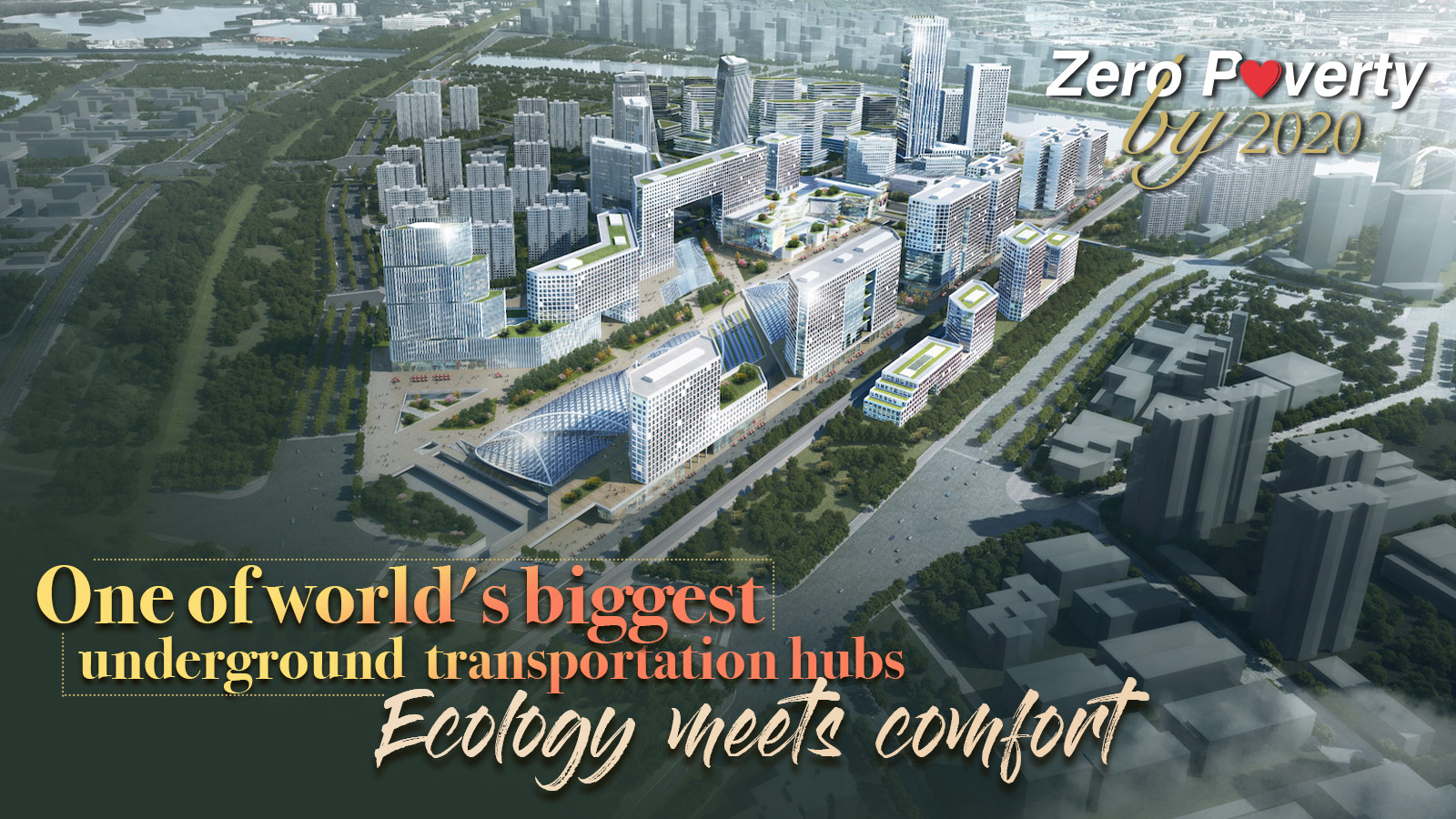
China's capital Beijing is constructing a 1.3 million-square-meter underground transportation hub in its sub-city center in southeastern Tongzhou District. This mega project began on November 30, 2019 and, when completed in five years, will be one of the world's largest underground transportation hubs.
Around 450,000 people a day will transit among three subway and two high-speed train lines connecting Beijing's airports and the Universal Studios theme park. The hub features an idea of transit-oriented development (TOD).

The construction site of a mega transportation hub in Tongzhou District, Beijing, China. /CGTN Photo
The construction site of a mega transportation hub in Tongzhou District, Beijing, China. /CGTN Photo
Top international and domestic designers involved in the project had studied such TOD projects as Shanghai's Hongqiao Integrated Hub and Hong Kong's West Kowloon Station in China and La Défense Station in France.
But what exactly is TOD? The Beijing hub now under construction could be a good example – it's not only a transportation hub, but also a public space for urban activities.
As a fifth-generation Chinese transportation hub, this three-layer underground hub integrates the giant project with and the city proper, according to He Yi, a manager at the Beijing Sub-Civic Center Project Management Office.
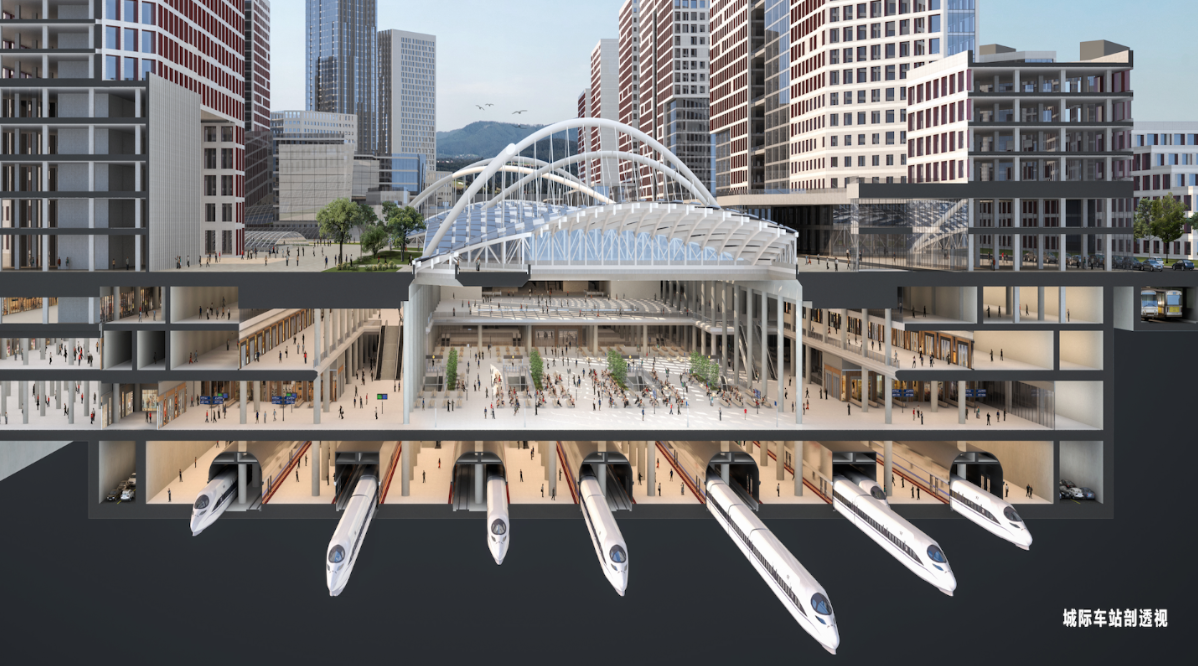
Sectional view of the underground transportation hub now under construction in Tongzhou District, Beijing, China. /CGTN Photo
Sectional view of the underground transportation hub now under construction in Tongzhou District, Beijing, China. /CGTN Photo
In the hub, floor B3 is designed as the track area and B2 will be the exit area as well as the waiting space. B1 is the arrival space and the ground floor will be an extension of the urban landscape, according to Li Jinshan, a designer at the Beijing General Municipal Engineering Design and Research Institute.
"People on the ground level won't realize there's a transportation hub below. Passengers can experience it only if they go underground," said Jiao Min, a designer at Jingtou Construction of Transport Hub Investment Company.
"We cannot separate the ecology from the quality of people's lives," said Luc Neouze, the general manager and architect at AREP who has been working on this project for three years and living in China for eight years.
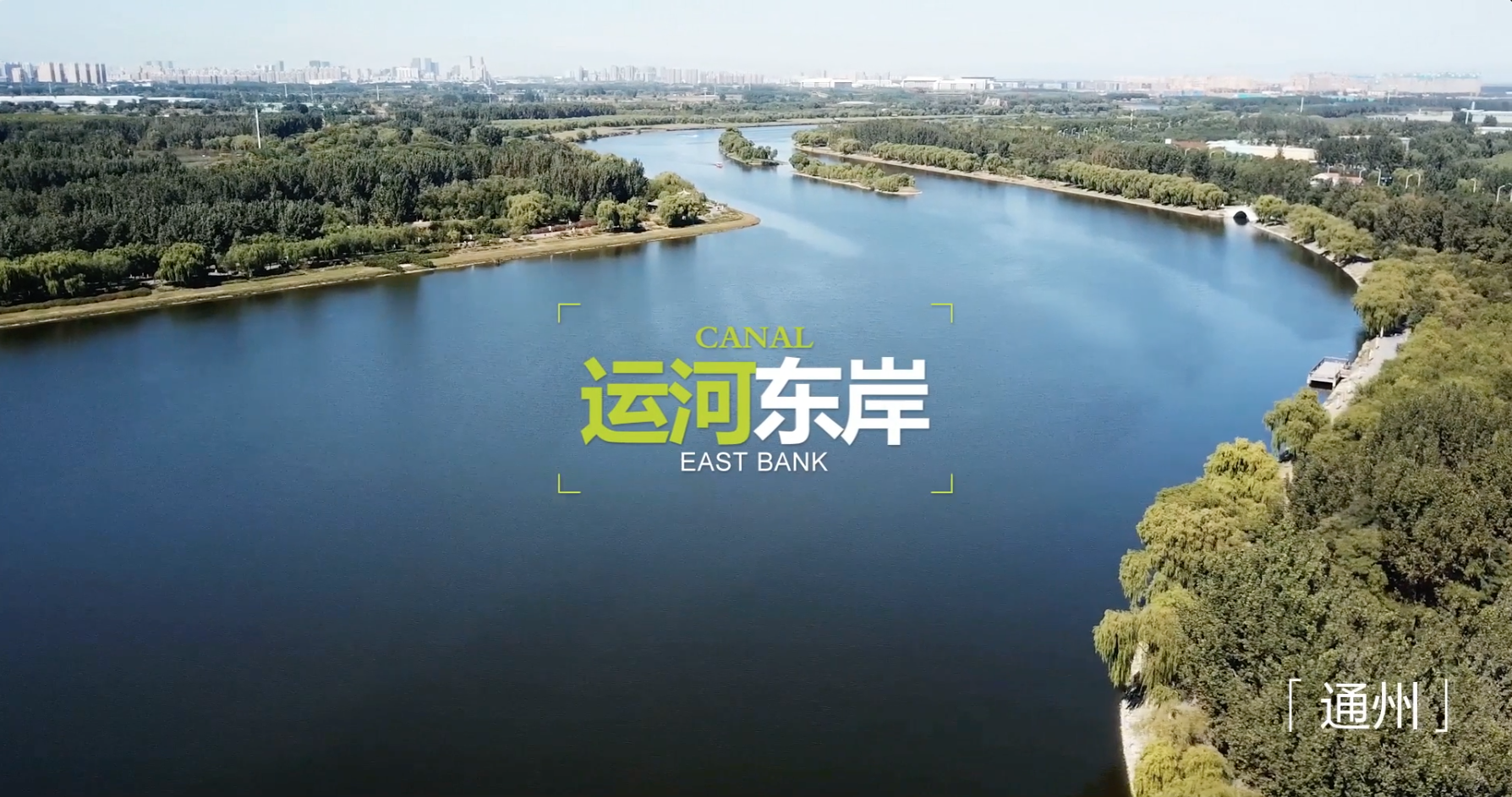
The Grand Canal flowing through Tongzhou District, Beijing, China. /CGTN Photo
The Grand Canal flowing through Tongzhou District, Beijing, China. /CGTN Photo
Neouze told CGTN that understanding the Chinese culture, history and a passion for the country are important for cooperating with Chinese institutes in such a project. "We work in China because we love China," said the French architect.
"The Forbidden City in Beijing was built with trees and the wood was delivered by boats through the Grand Canal from south China," said Neouze. Tongzhou is at the northern end of the time-honored Beijing-Hangzhou Grand Canal, which has a history of more than 2,000 years. Since ancient times, Tongzhou has been a transportation hub thanks to the canal.
"We want to understand the history of Tongzhou, which will provide a vision of the future," said Neouze. He emphasized that the concept of TOD was not invented in the 21st century. It has existed throughout history, connecting the flow of people and development.
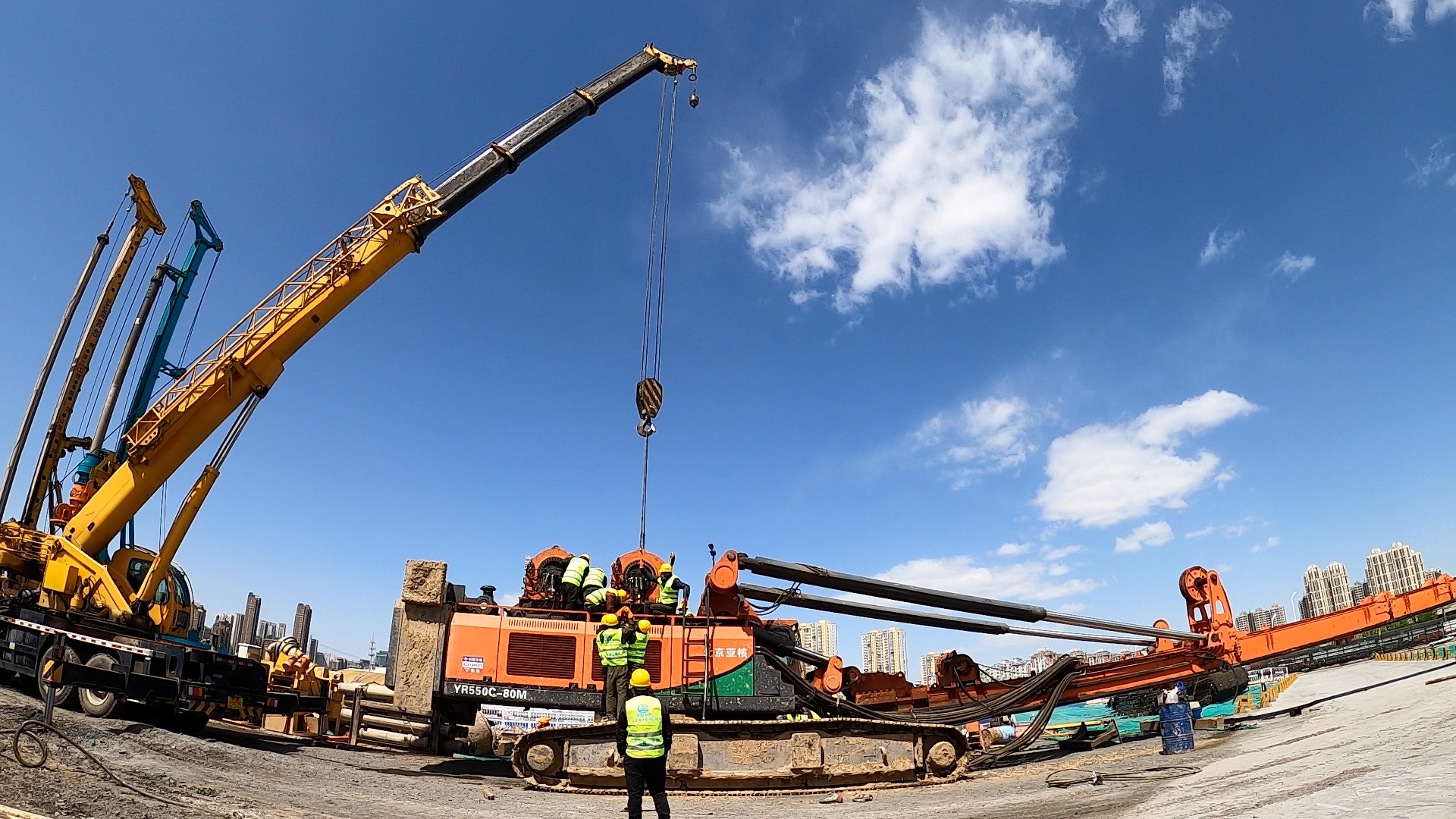
The construction site of the giant transportation hub in Tongzhou District, Beijing, China. /CGTN Photo
The construction site of the giant transportation hub in Tongzhou District, Beijing, China. /CGTN Photo
Over 1,300 years ago, the canal in Tongzhou had a harbor which served as a form of TOD because of the flow of people. The crossroads on the Silk Road in China over 600 years ago were another kind of TOD due to the flow of people and goods, said the architect.
The hub has some unique designs. One of the most special features is the natural light that shines down to the third underground floor. "Natural light makes people feel better and they feel more secure because they know where the sun is, where the greenery is," said Neouze.
Passengers can also know if the trains they's waiting for have arrived as they could see the rails below, according to Li Jinshan.
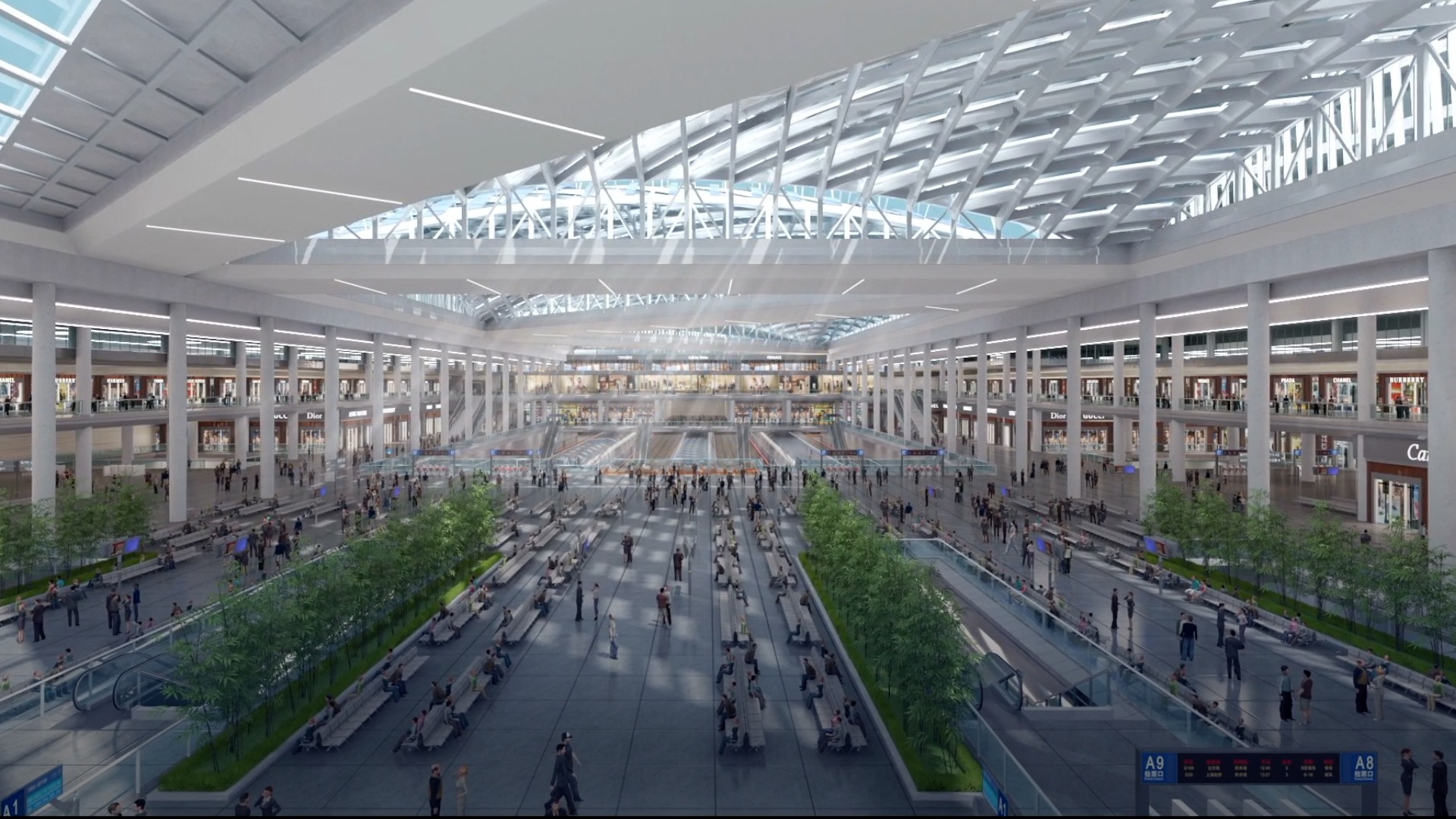
Natural light shines on the underground platform in the transportation hub now under construction in Tongzhou District, Beijing, China. /CGTN Photo
Natural light shines on the underground platform in the transportation hub now under construction in Tongzhou District, Beijing, China. /CGTN Photo
Another detail is the hub's green design. In order to have more trees planted in the hub, designers plan to reserve as much earth as possible after it's removed to create the space, with the goal of urban eco-planning.
An easy traffic transfer will also make the hub an outstanding model, with passengers feeling zero difficulty for transfer between the two underground track lines.
As China aims to eradicate extreme poverty by the end of 2020. Building a well-off society in a humanized, sustainable and environmentally friendly way is a more advanced target. The Beijing Sub-Center Station Comprehensive Transportation Hub exemplifies efforts by creative people at home and abroad for the goal of creating a more livable city.
Editor: Mi Xue
Filmed by Dong Hailin
Designer: Qu Bo
Text by Mi Xue
Copy editor: Nadim Diab, John Goodrich
Producer: Wen Yaru
Chief editor: Pei Jian, Zhou Zongxin
Supervisor: Pang Xinhua